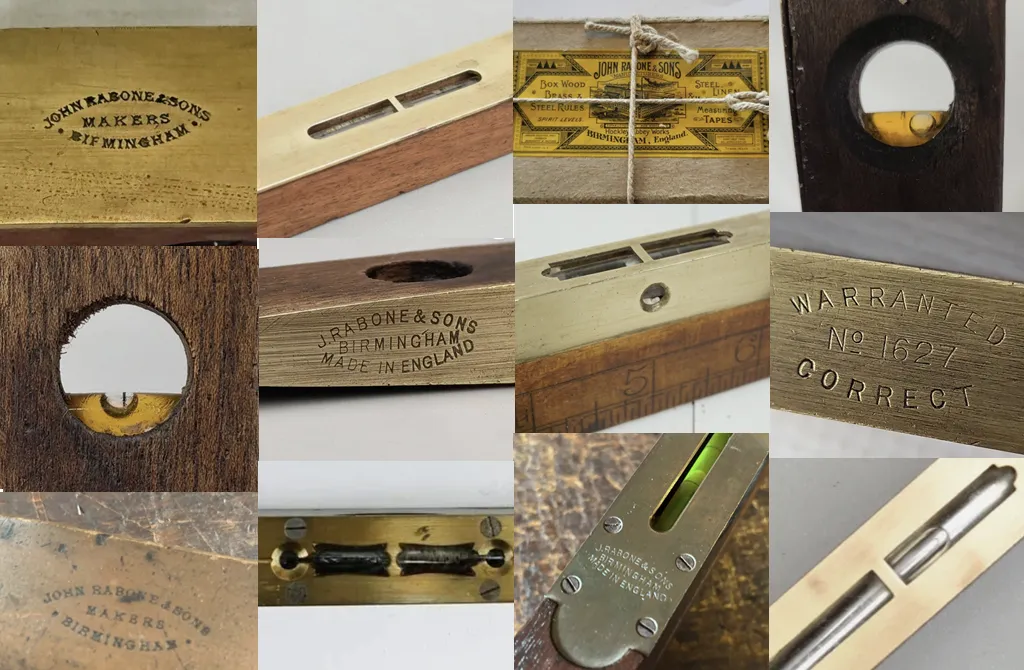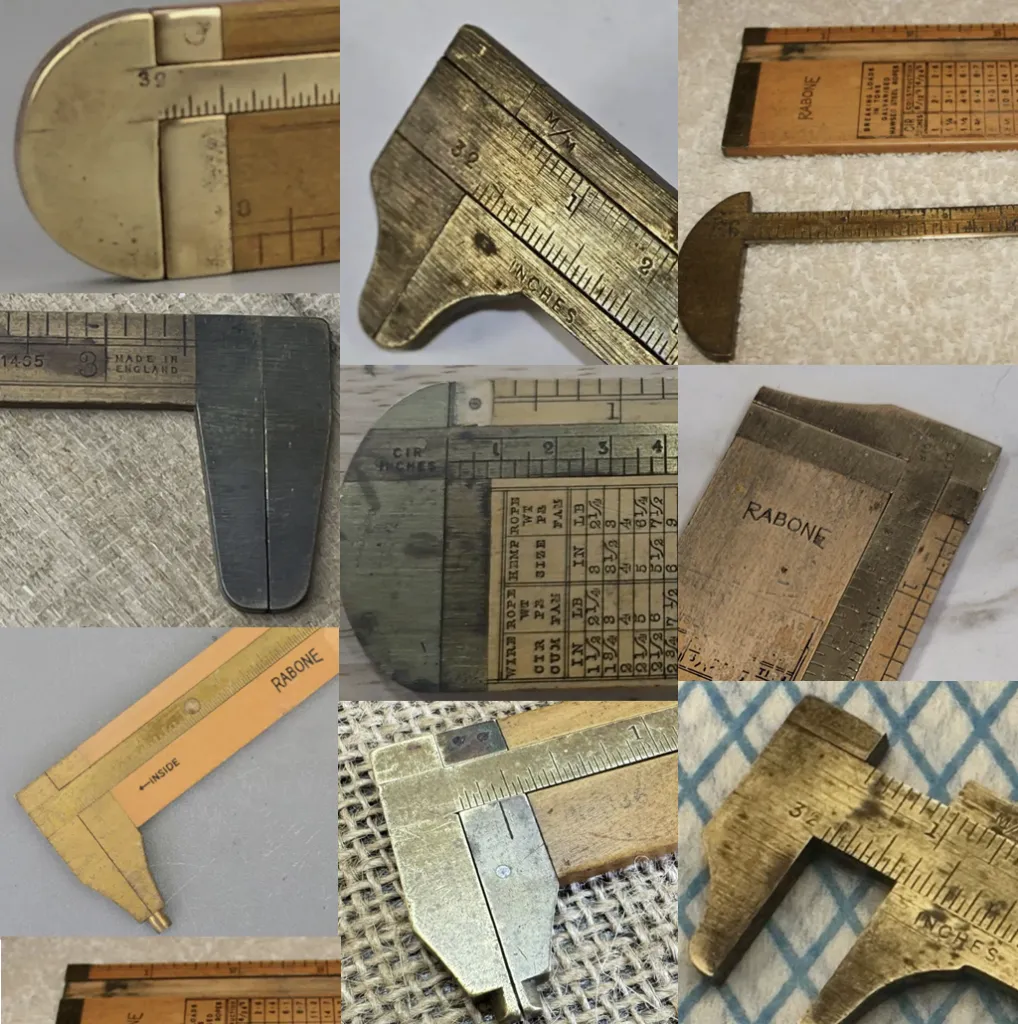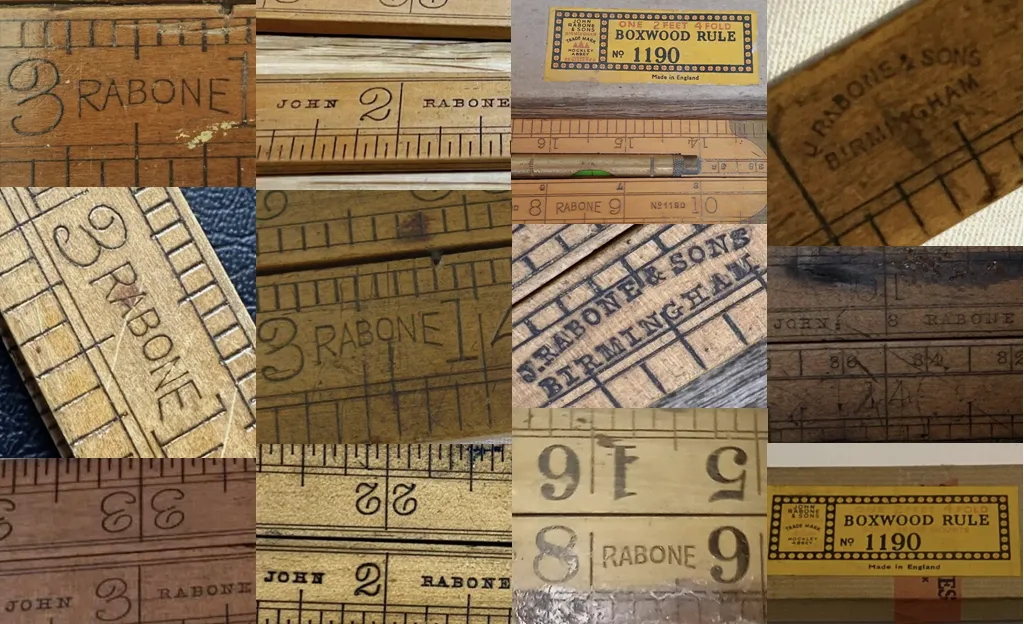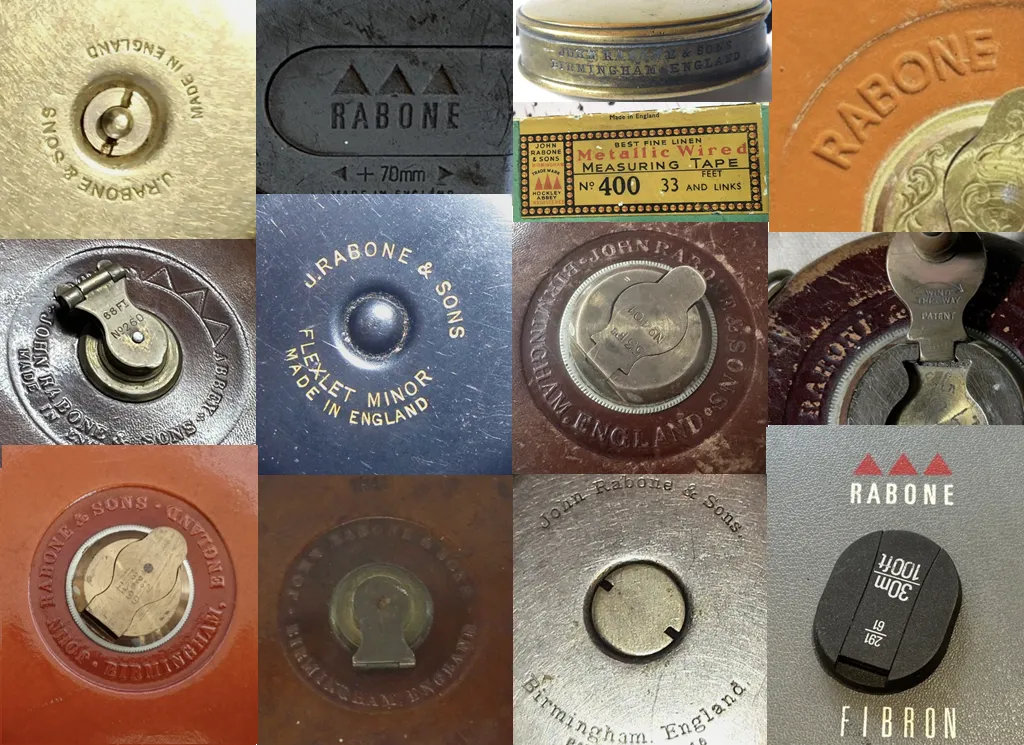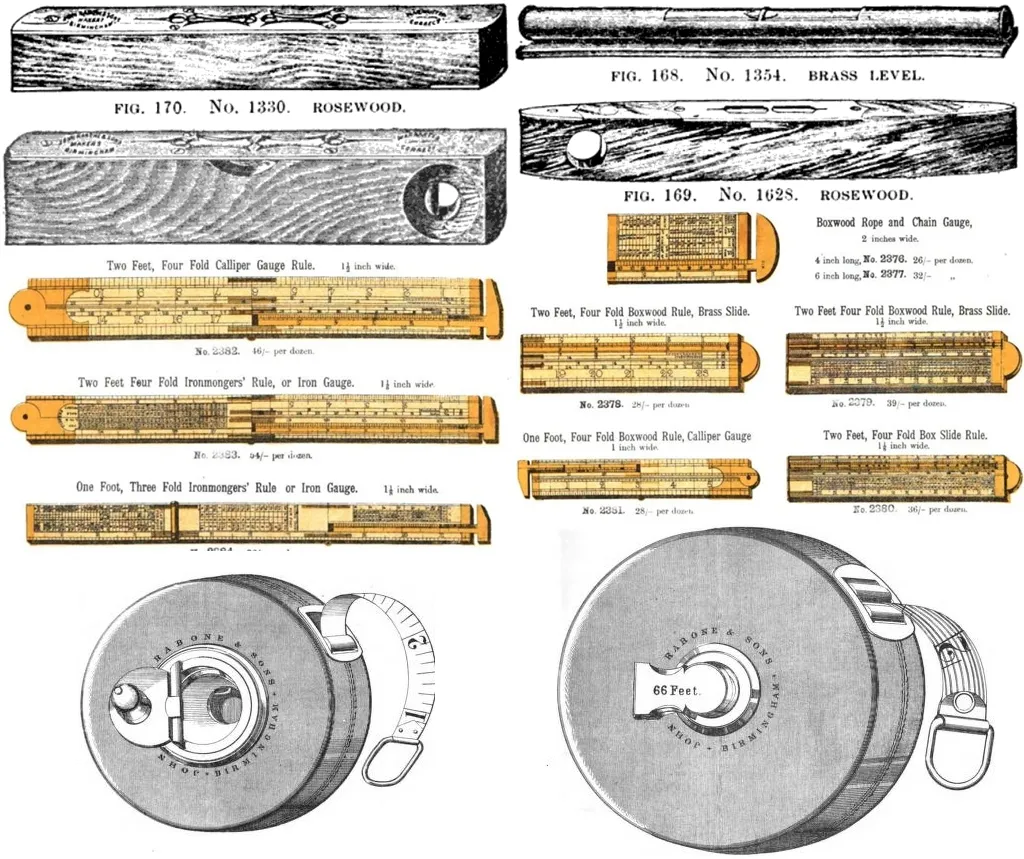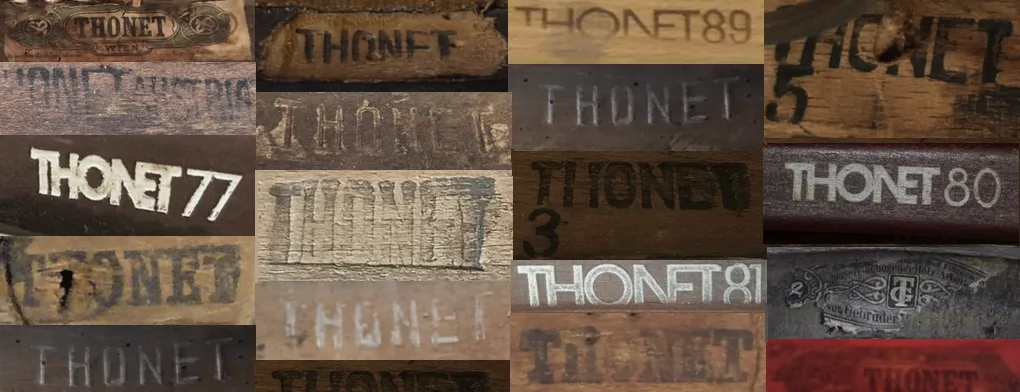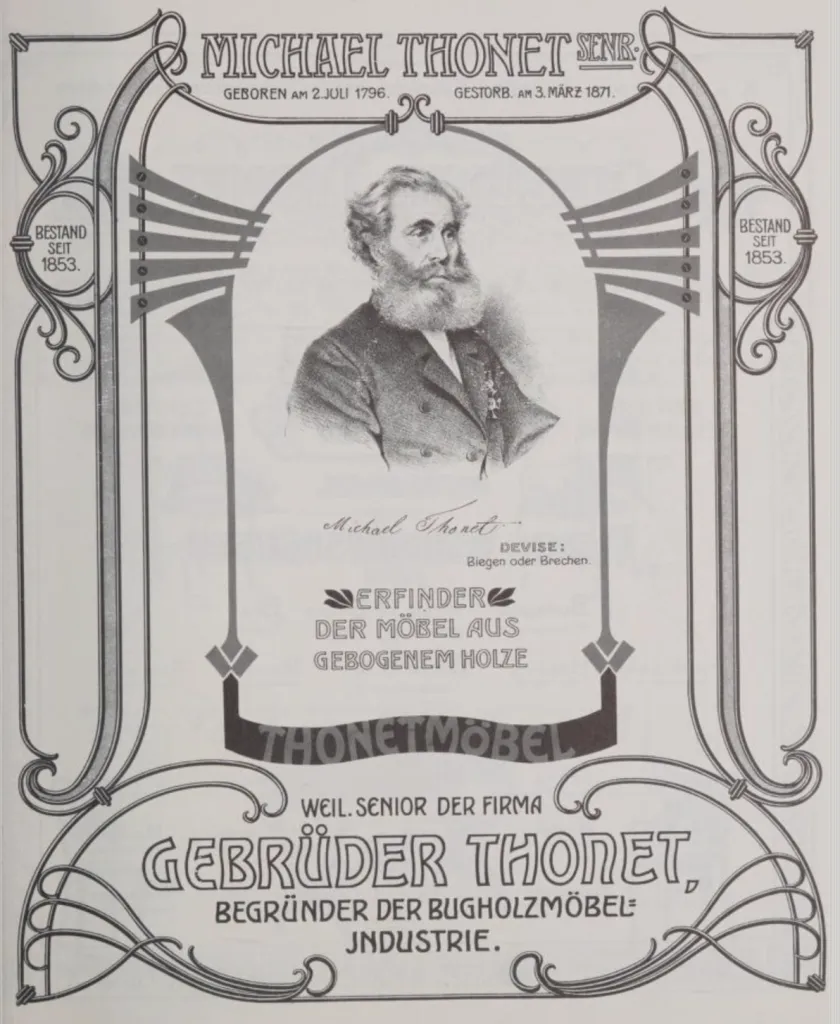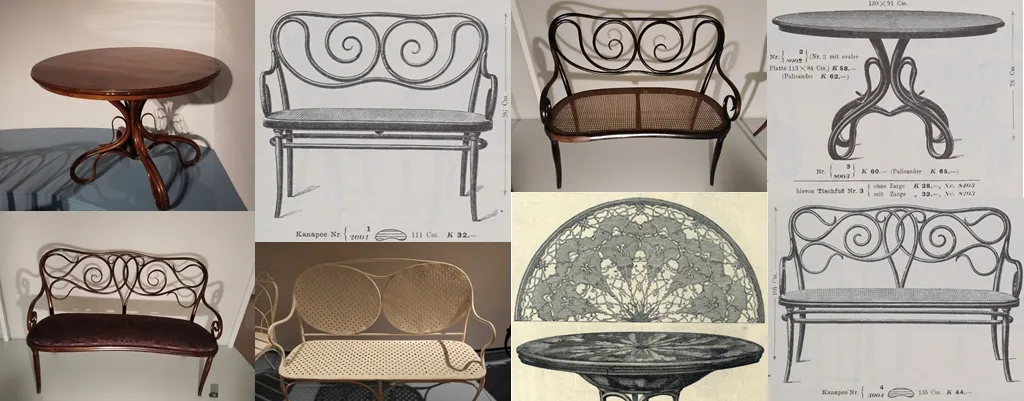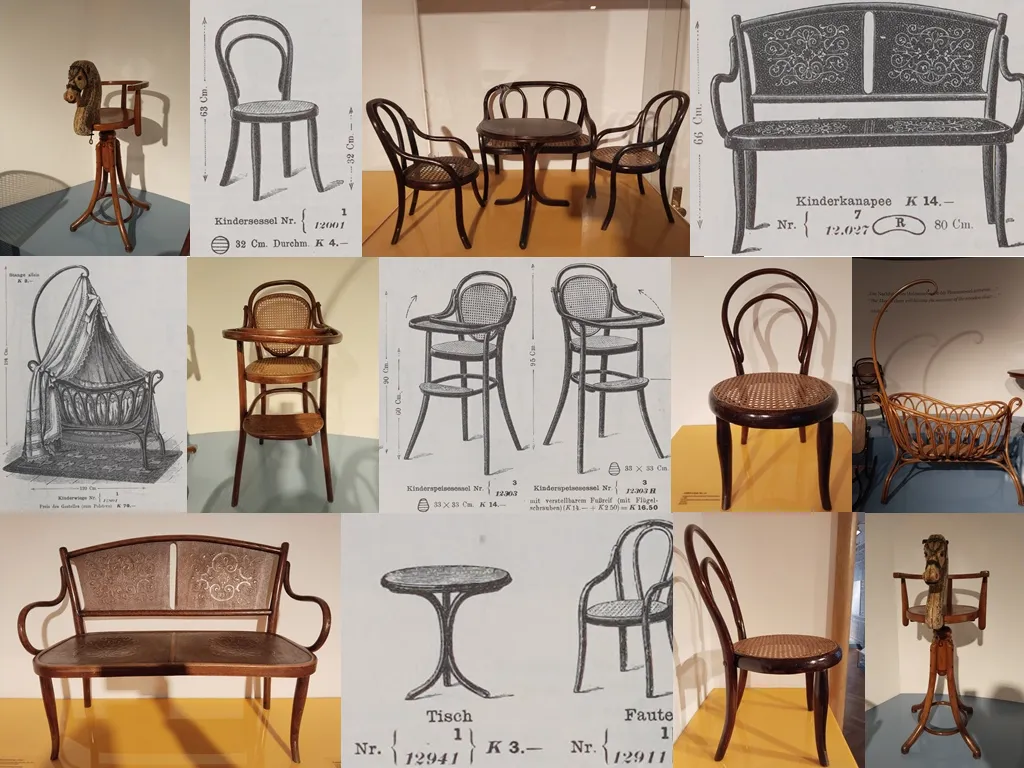Thonet Chair
Thonet chairs changed the face of furniture design. From the first Boppard models to the timeless bentwood classics, they remain icons of 19th-century craftsmanship.
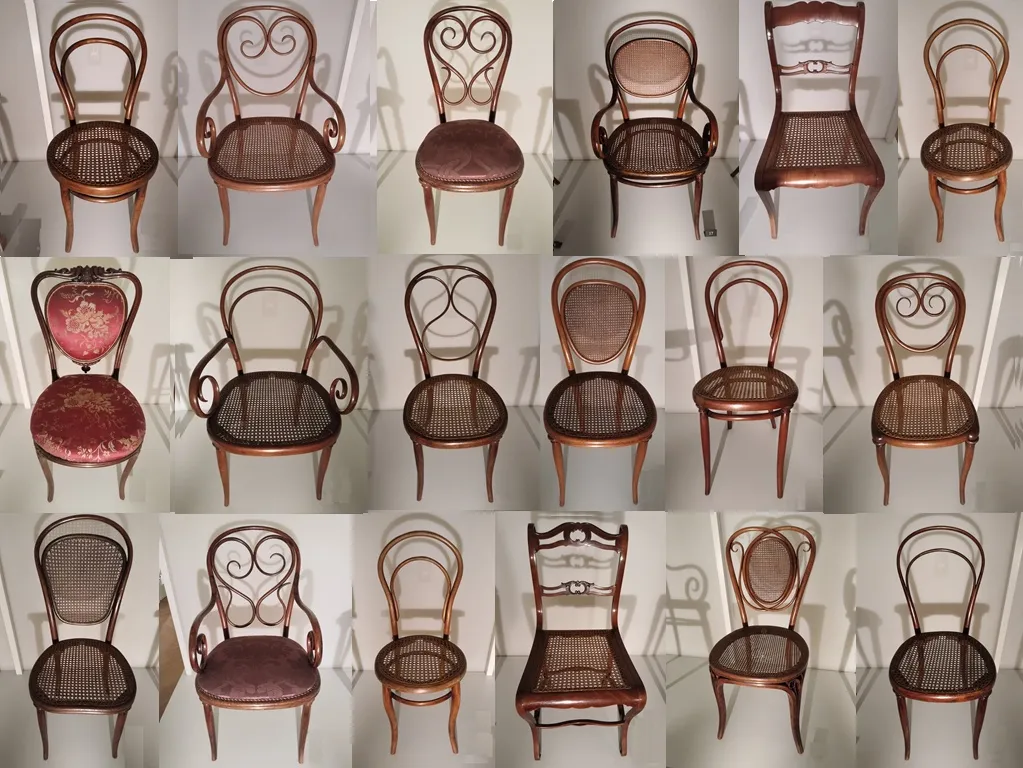
by Stable MARK - own work
This collection brings together Thonet’s most fascinating works — from the early Boppard experiments to refined models like no. 2, no. 12, and the legendary café chair no. 14, alongside rare commissions for the Palais Liechtenstein and Palais Pálffy.
Table of Contents
Thonet Simple Bopparder ChairThonet Bopparder ChairThonet Chair for the Liechtenstein City PalaceThonet Chair Model No. 1Thonet Chair Model No. 2Thonet Armchair Model No. 2Thonet Chair Model No. 4Thonet Armchair Model No. 4Thonet Chair Model No. 7Thonet Chair Model No. 8Thonet Armchair Model No. 8Thonet Armchair Model No. 11Thonet Chair Model No. 12Thonet Chair Model No. 14Thonet Chair Model No. 22 made for the Palais PálffyThonet Simple Bopparder Chair
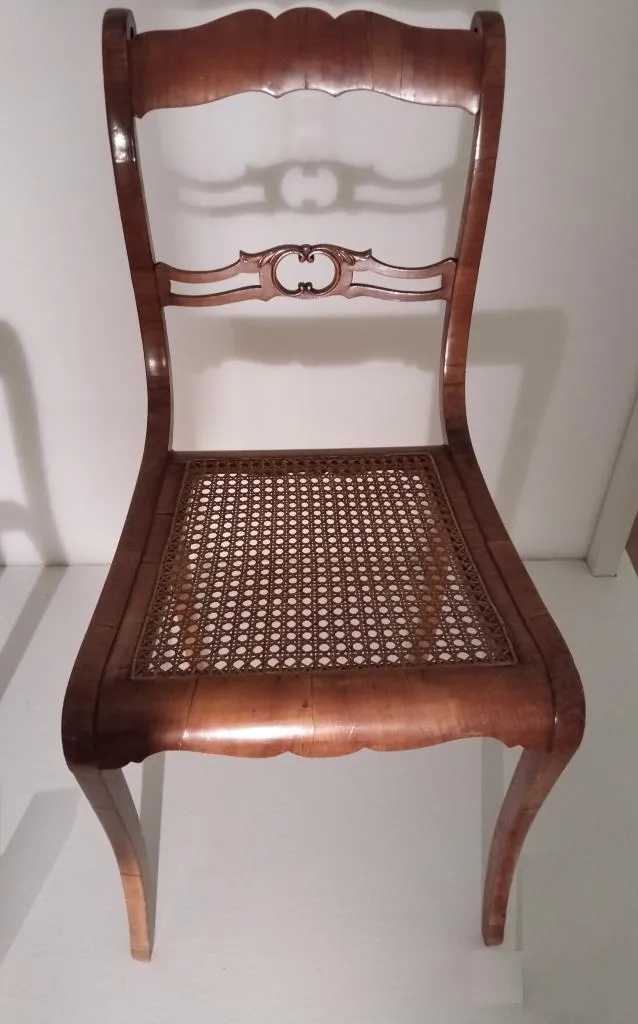
Source: by Stable MARK - own work
Crafted: Walnut, laminated and bent; cherry veneer; cane weave.
Thonet Bopparder Chair
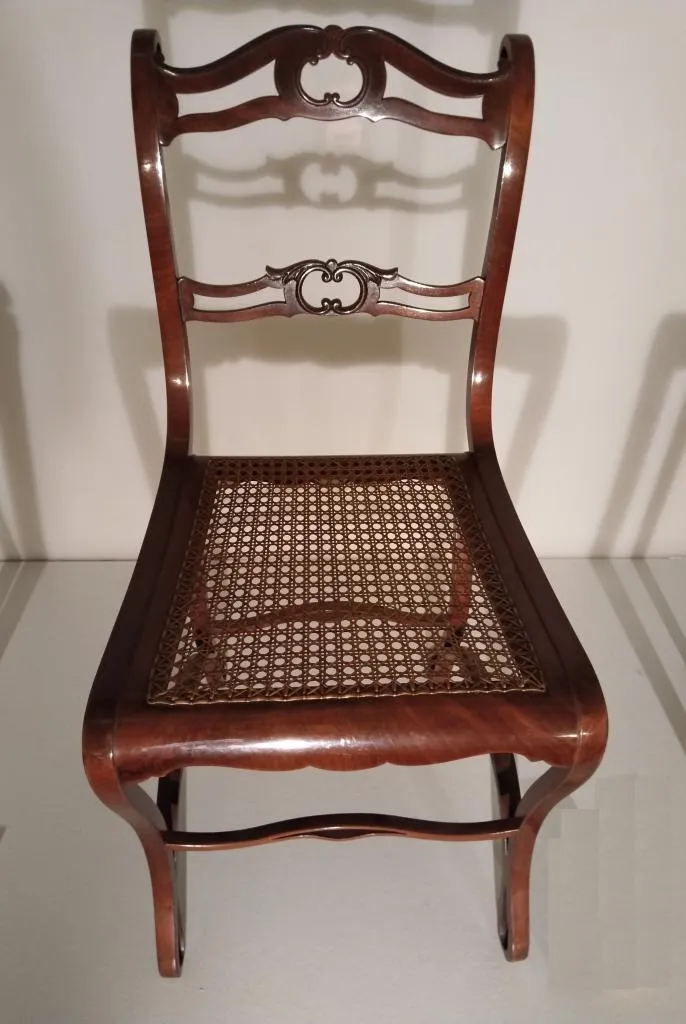
Source: by Stable MARK - own work
Crafted: Walnut, laminated and bent; mahogany veneer; cane weave.
Even before Michael Thonet moved to Vienna with his family, a distinctive chair form had already emerged in his hometown of Boppard on the Rhine: the so-called "Boppard Chair." These early pieces reflect Thonet’s ongoing search for more economical production methods. Instead of carving the side frames of the popular Biedermeier-style armchairs from solid wood, he began forming them using bentwood techniques. This involved layers of laminated veneer, bent in two dimensions — a key innovation that paved the way for industrial furniture manufacturing.
Thonet Chair for the Liechtenstein City Palace
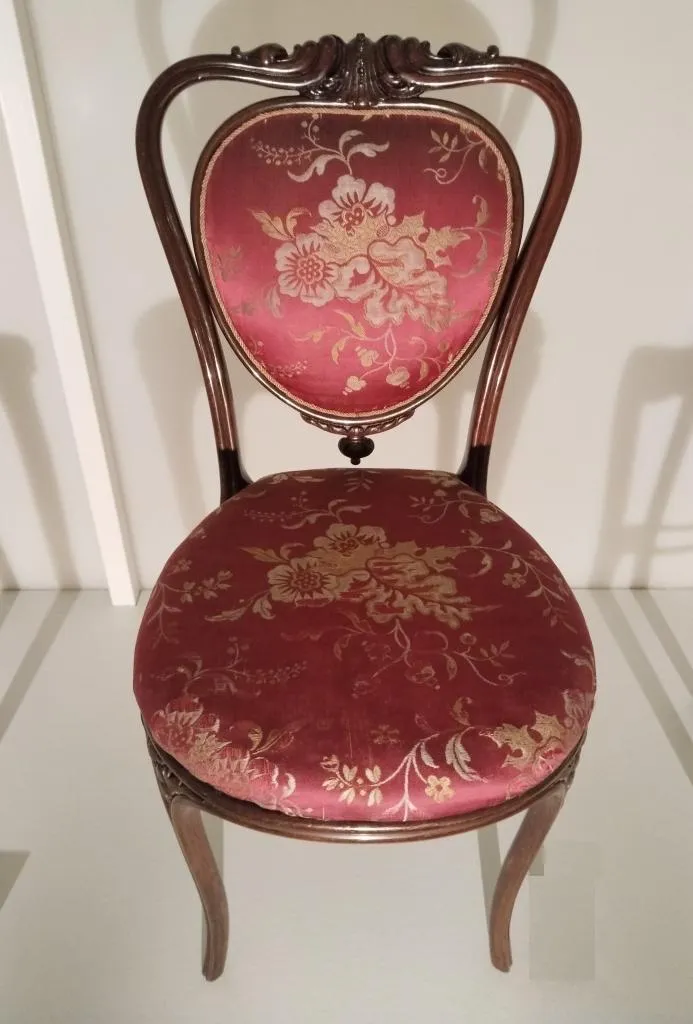
Source: by Stable MARK - own work
Crafted: Rosewood, solid and partly carved, rod- and laminated-bent; original silk damask upholstery.
In the mid-1840s, Michael Thonet received his first major commission in Vienna: furnishing the Liechtenstein City Palace, which was undergoing extensive renovation at the time. Working from designs by the Anglo-Austrian architect Peter Hubert Desvignes, Thonet produced both intricate parquet flooring and seating furniture. It was during this project that he first applied his newly developed lamination technique, which made it possible to bend wood in three dimensions — a groundbreaking advancement in the history of furniture making.
Thonet Chair Model No. 1
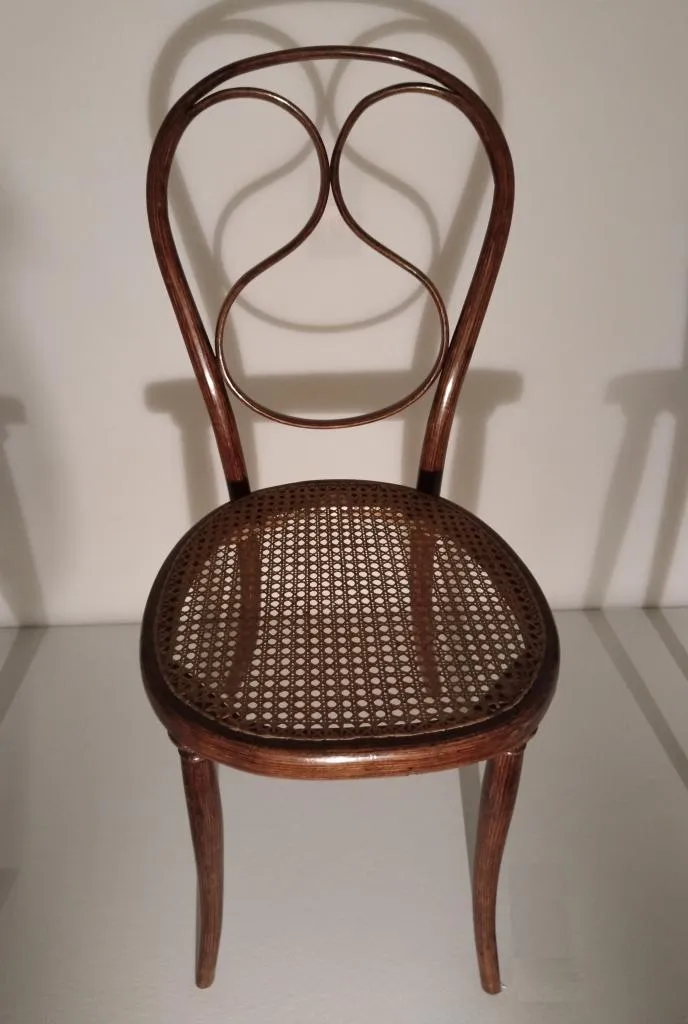
Source: by Stable MARK - own work
Crafted: Solid beechwood, steam-bent in multiple parts, with a two-piece backrest insert, rosewood-stained finish, and cane weave.
Thonet Chair Model No. 2
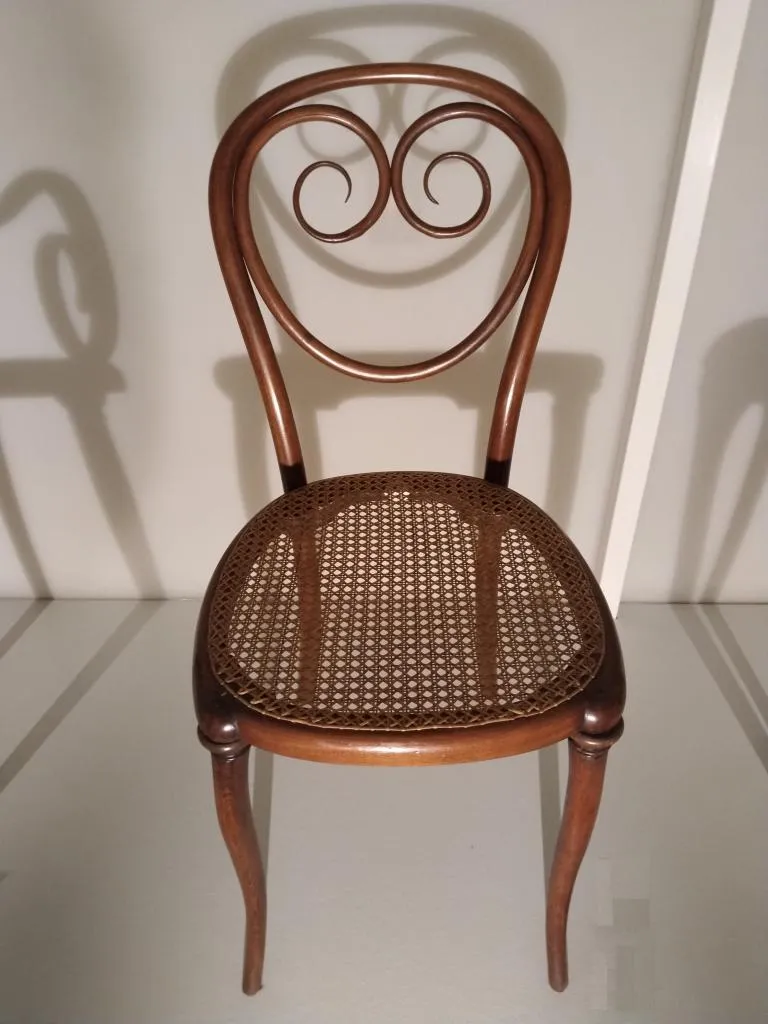
Source: by Stable MARK - own work
Crafted: Bent laminated beech with solid front legs, brown stained; cane weave.
Thonet Armchair Model No. 2
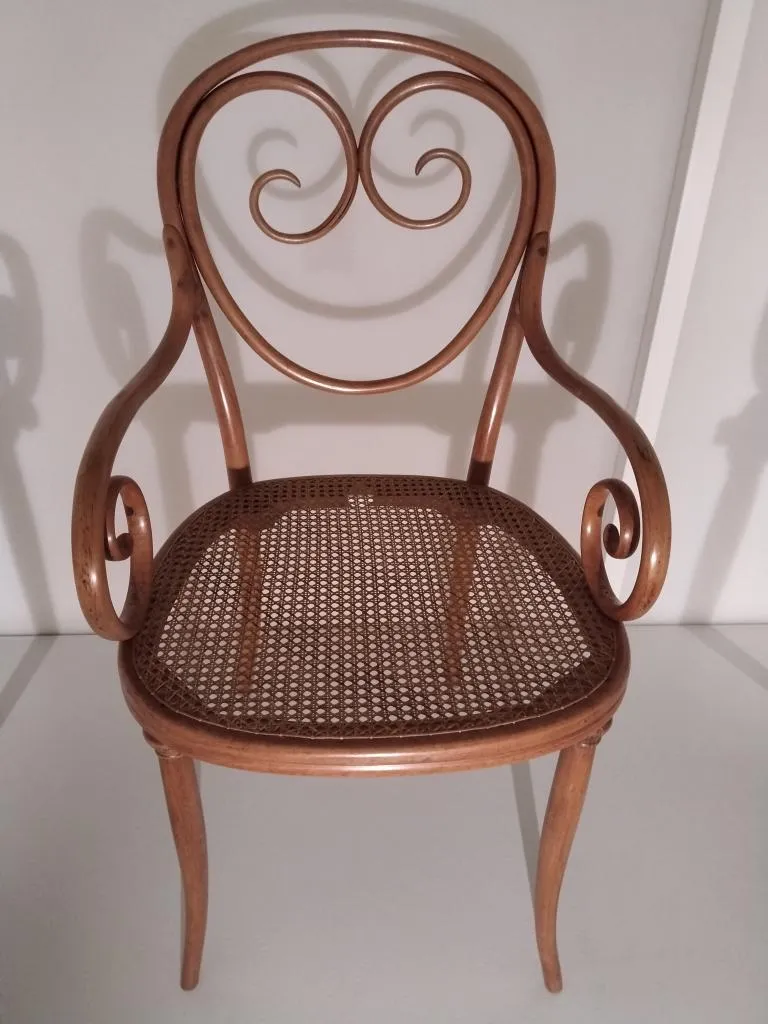
Source: by Stable MARK - own work
Crafted: Solid bent beech with three-part backrest inserts, brown stained; cane weave.
Thonet Chair Model No. 4
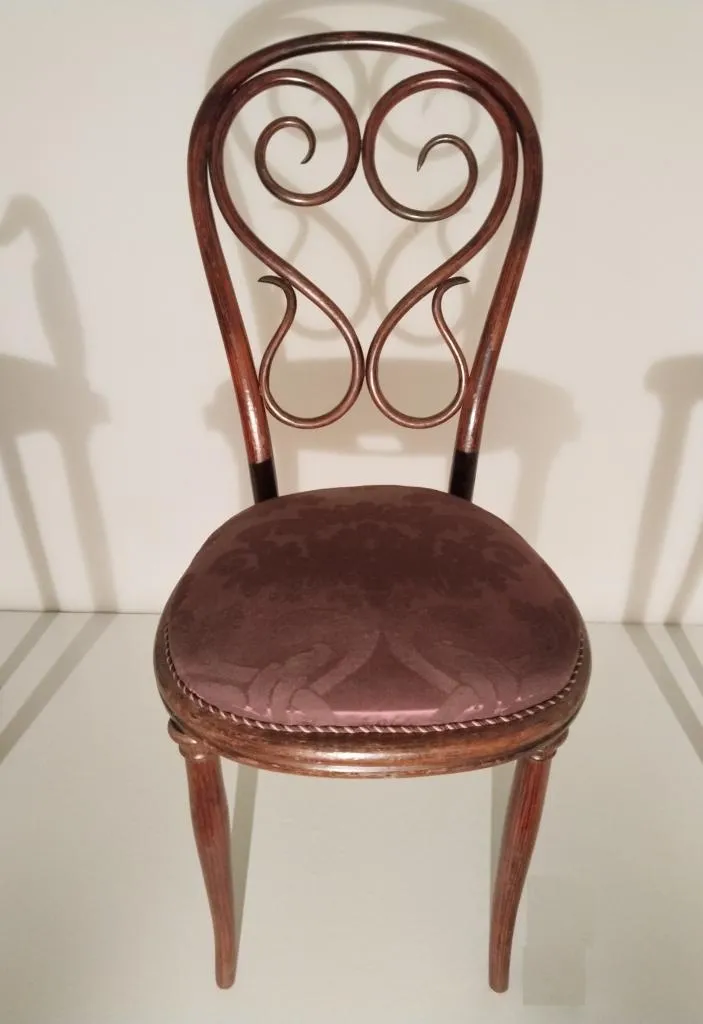
Source: by Stable MARK - own work
Crafted: Solid bent beech with three-part backrest inserts, rosewood-stained; renewed damask upholstery.
Thonet Armchair Model No. 4
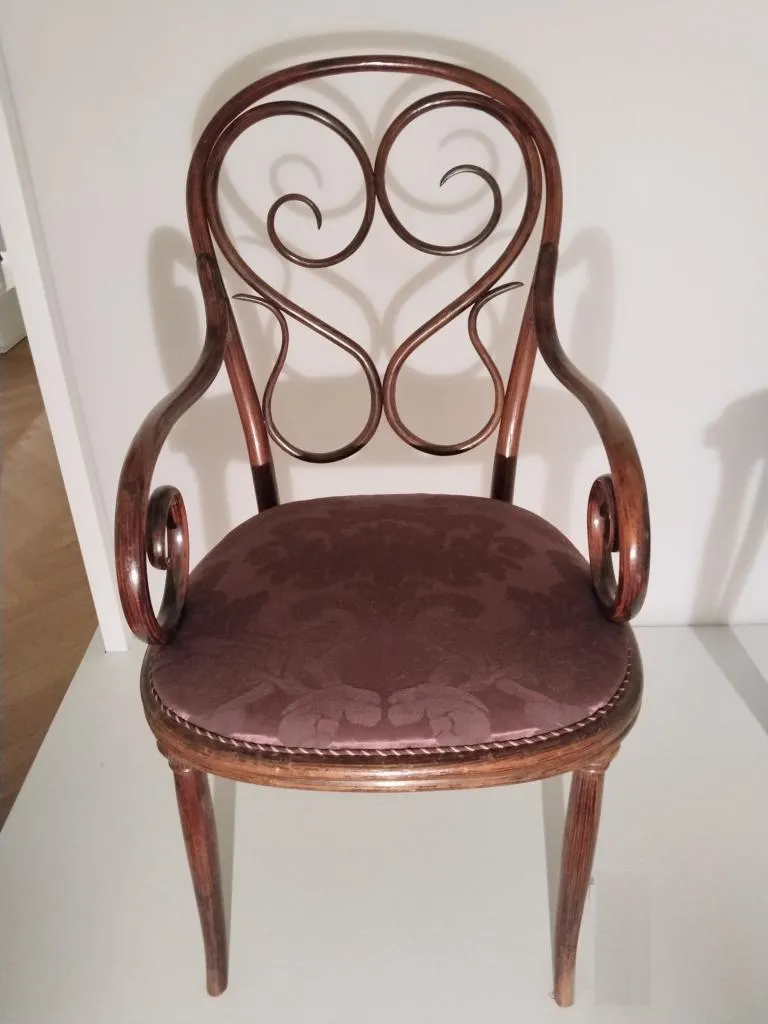
Source: by Stable MARK - own work
Crafted: Solid bent beech with three-part backrest inserts and two-part armrests, rosewood-stained; renewed damask upholstery.
Learn More Still curious? Click here to learn about the settee model No. 4.
Thonet Chair Model No. 7
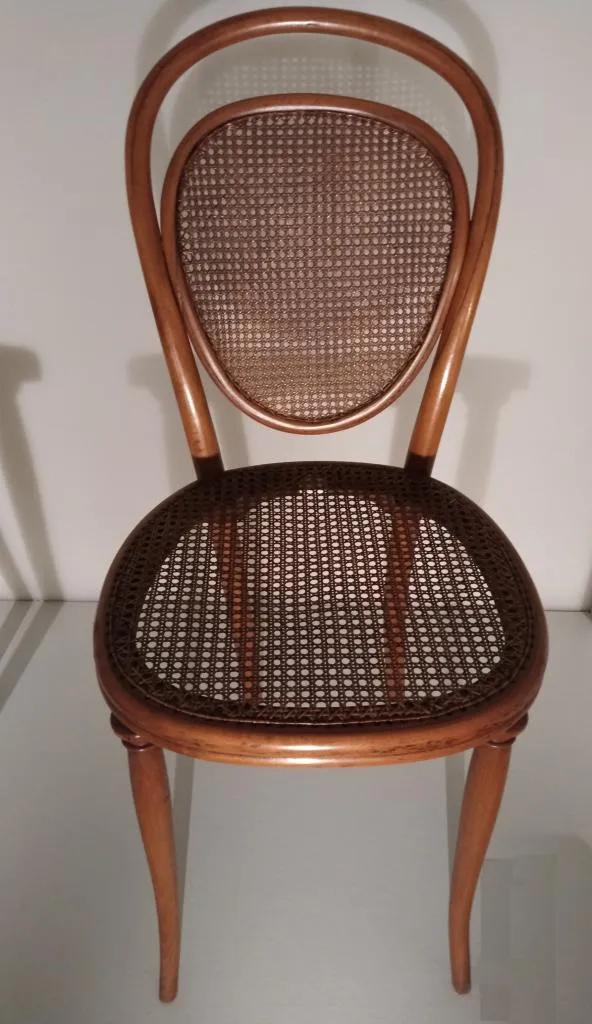
Source: by Stable MARK - own work
Crafted: Solid beech, multi-part bent, brown stained; cane weave.
Thonet Chair Model No. 8
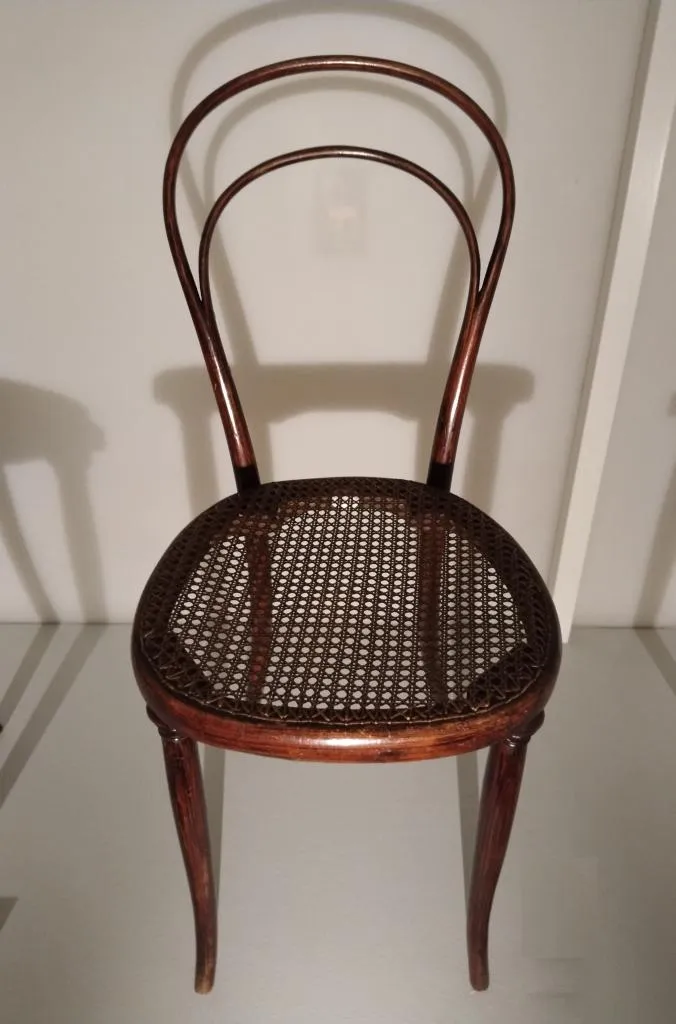
Source: by Stable MARK - own work
Crafted: Solid bent beech with slotted back legs, rosewood-stained; cane weave.
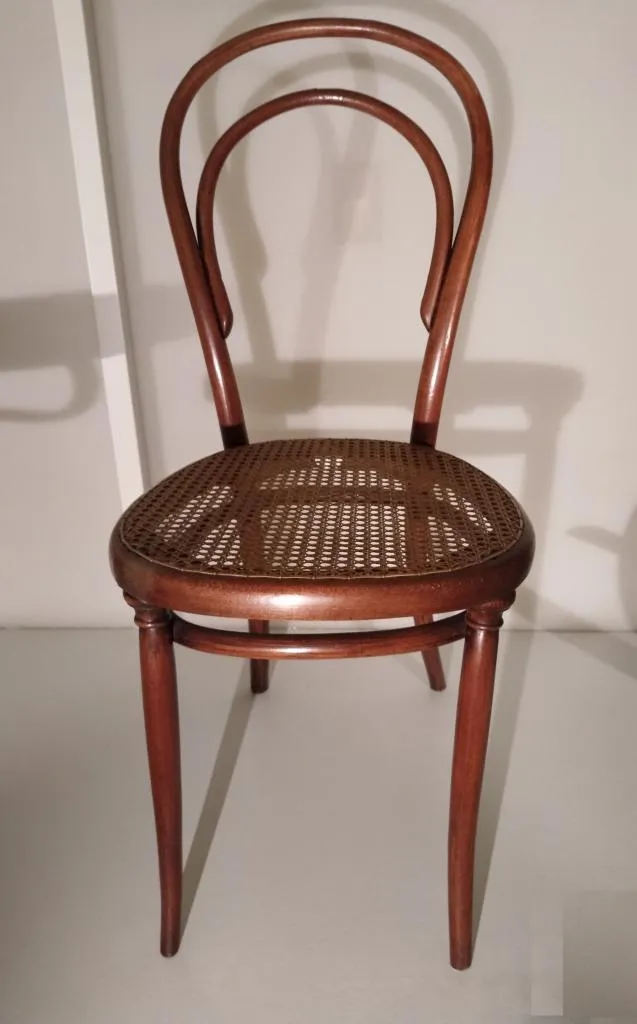
Source: by Stable MARK - own work
Crafted: Solid bent beech, brown stained; cane weave.
Thonet Armchair Model No. 8
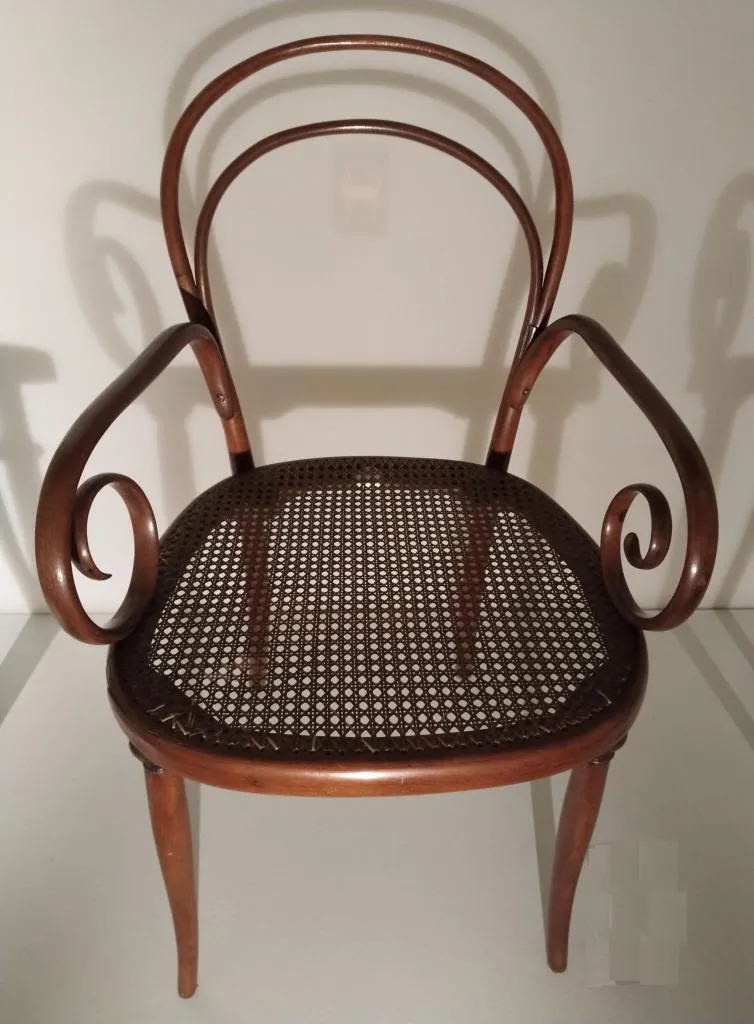
Source: by Stable MARK - own work
Crafted: Solid bent beech, brown stained; rare original armrest design, cane weave.
Thonet Armchair Model No. 11
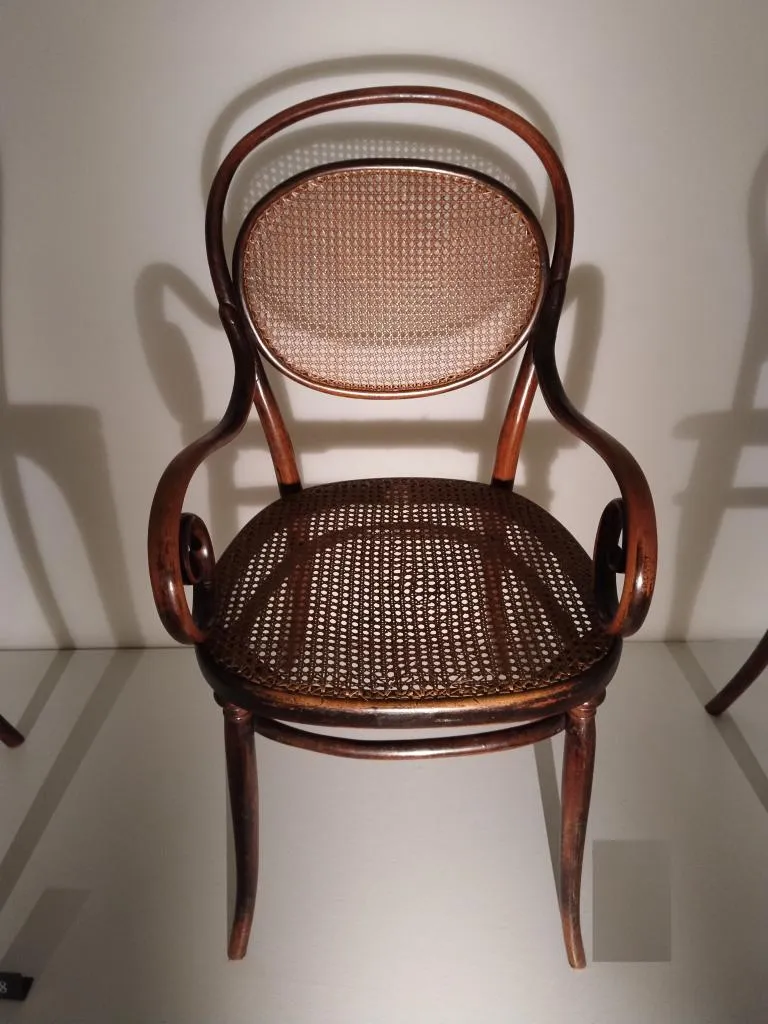
Source: by Stable MARK - own work
Crafted: Solid bent beech, brown stained; cane weave.
Thonet Chair Model No. 12
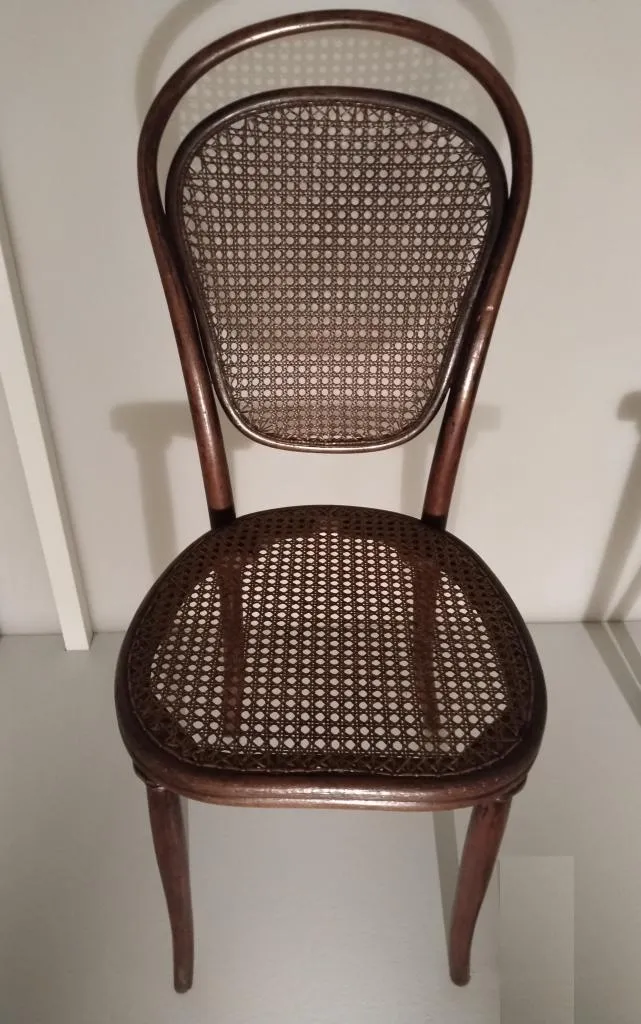
Source: by Stable MARK - own work
Crafted: Solid multi-part bent beech with three-part backrest insert and slotted back legs, rosewood-stained; cane weave.
Thonet Chair Model No. 14
As early as the 1850s, when Thonet’s furniture had become a major commercial success, competing firms began producing imitations. These rivals, however, lacked the patented rights that allowed Thonet to bend solid wood in three dimensions. The chair on display, a variant of the famous Model No. 14, was crafted by an unknown Viennese cabinetmaker using what was already an outdated method: laminated veneer bundles bent in only one plane. To simulate a three-dimensional curve, additional layers and joinery were applied. In terms of proportion and execution, the result appears somewhat clumsy compared to the Thonet original.
Learn More Still curious? Click here to learn about how can you tell if a thonet chair is real.
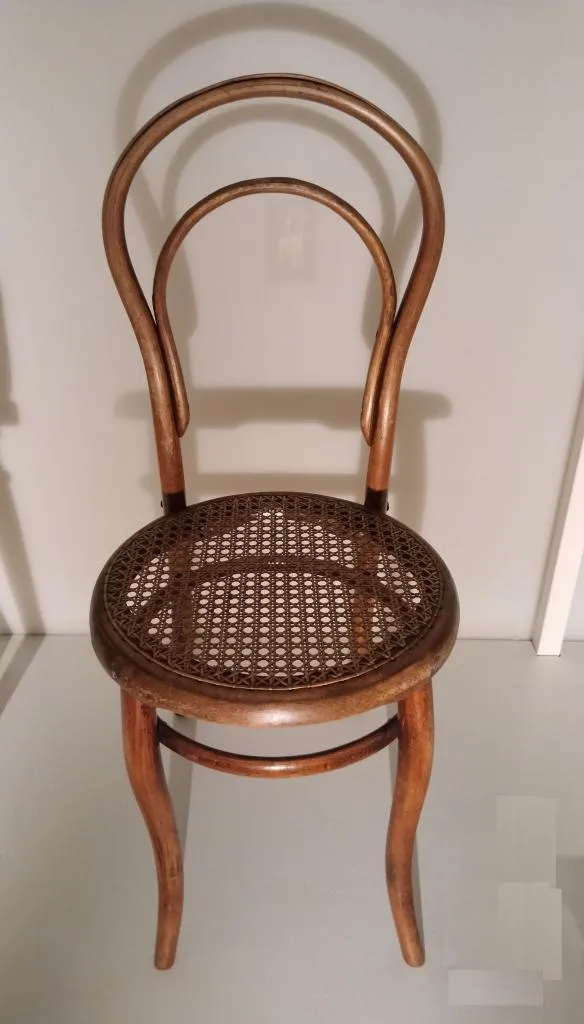
Source: by Stable MARK - own work
Crafted: Solid beech, partly bent with laminated layers, brown stained; cane weave.
By the early 20th century, more than 40 million units of this model — marketed by Thonet as the "consumer chair" — had reportedly been sold worldwide. In Thonet’s sales catalogs, this functionally designed piece, made from just six components, was the most affordable seating option available. Popularly known as the “three-guilder chair,” it earned its nickname due to its low price and widespread accessibility.
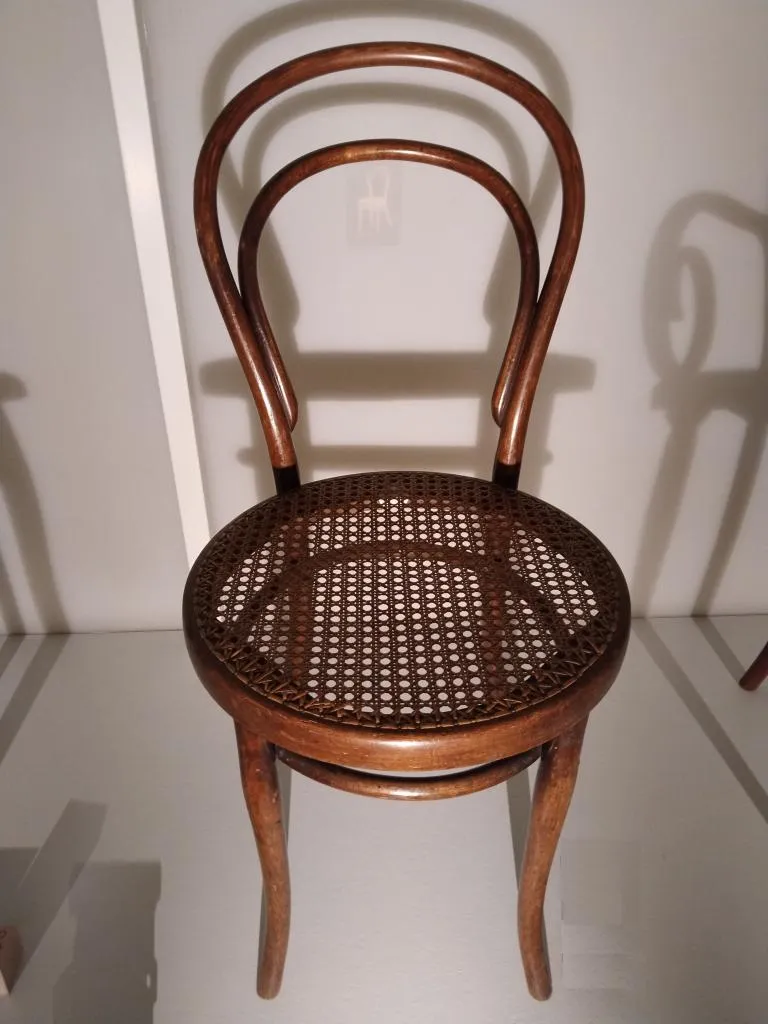
Source: by Stable MARK - own work
Crafted: Solid bent beech, brown stained; cane weave.
Thonet Chair Model No. 22 made for the Palais Pálffy
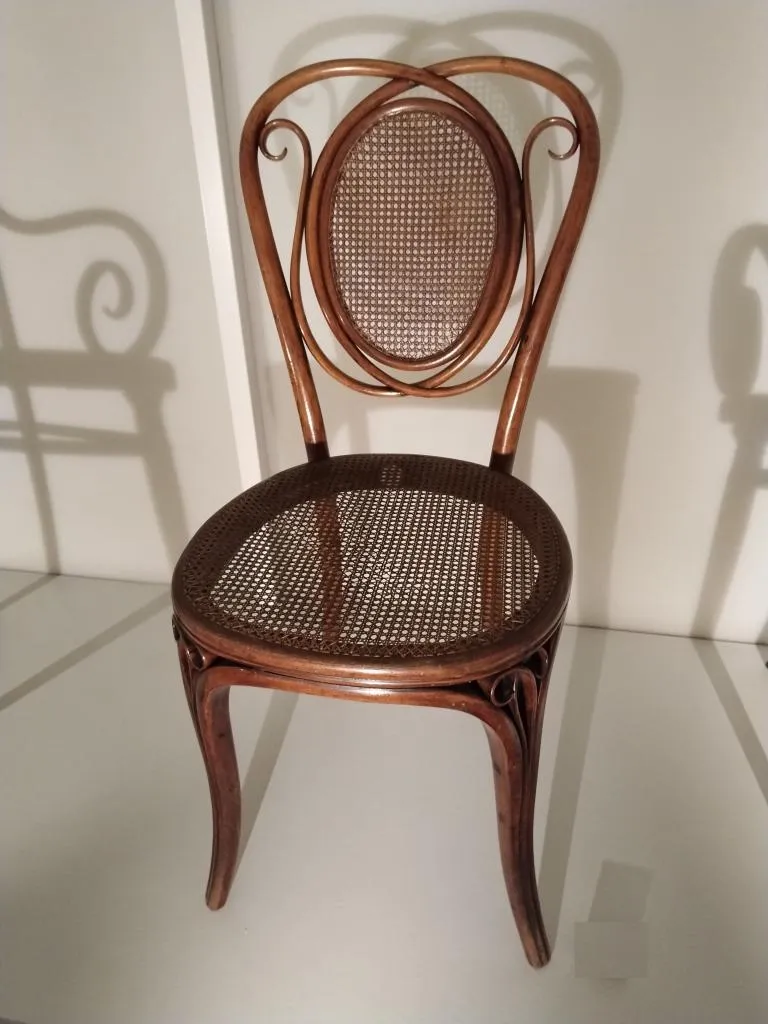
Source: by Stable MARK - own work
Crafted: Beechwood, laminated and solid bent; cane weave.
Learn More Still curious about bentwood furniture? Click here to learn about the Thonet rocking chair.
Thonet Chair Model No. 34
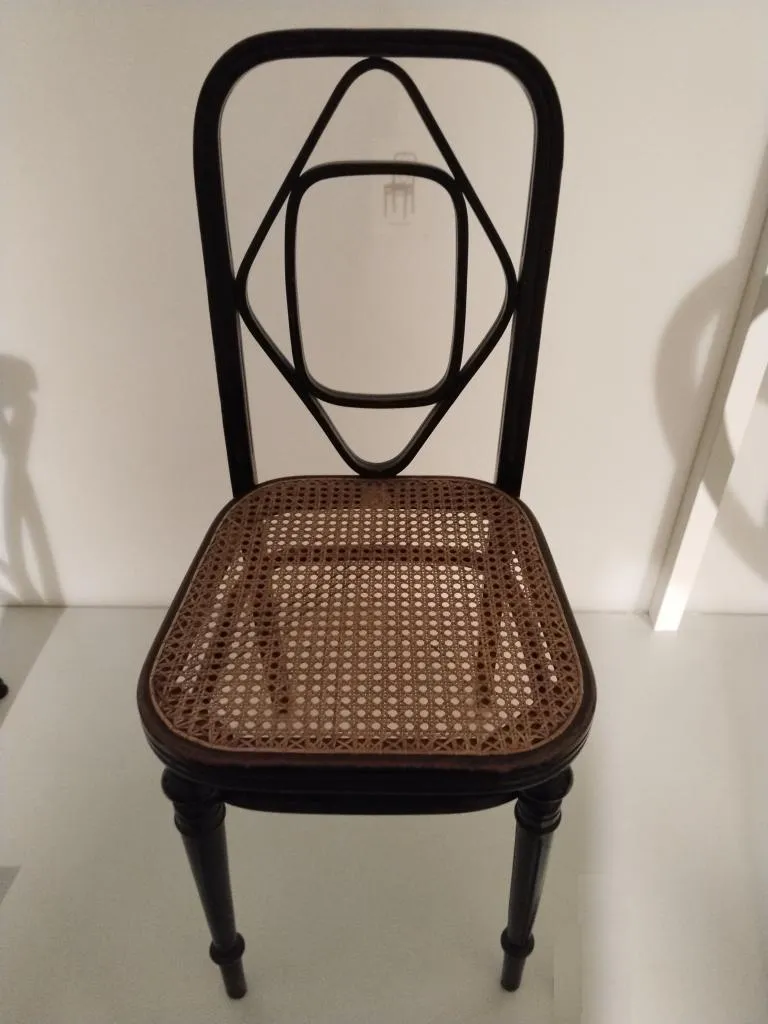
Source: by Stable MARK - own work
Crafted: Solid bent and turned beech, black stained; cane weave.
Thonet Chair Model No. 51
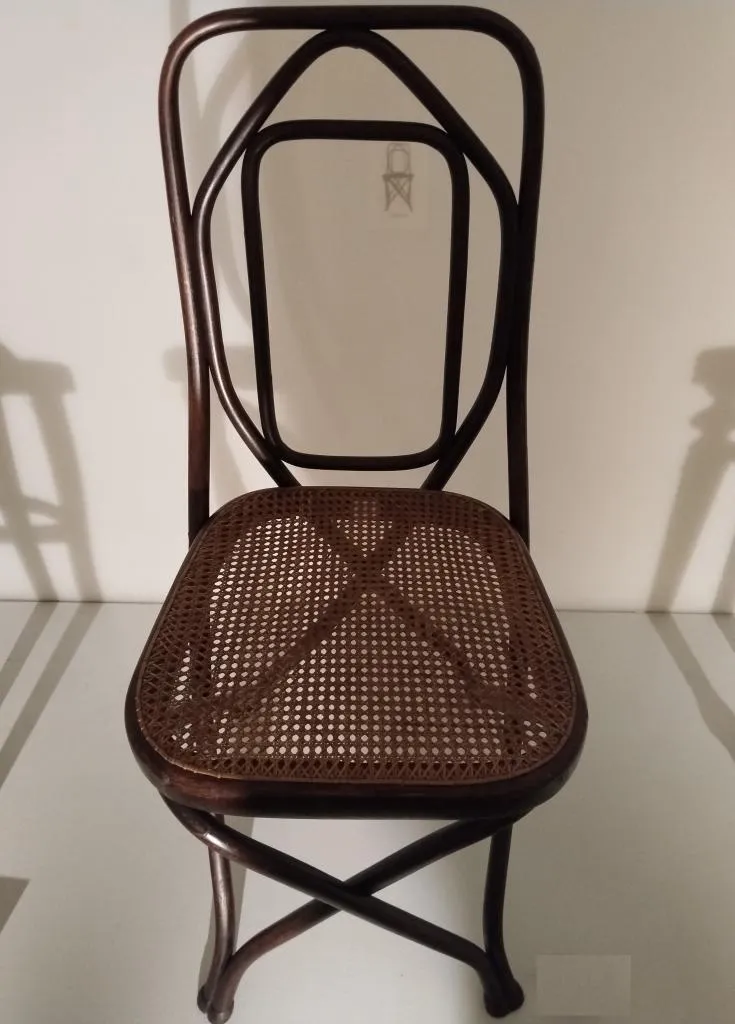
Source: by Stable MARK - own work
Crafted: Solid bent beech, brown stained; cane weave.
Learn More Still curious? Click here to learn about the Thonet Children and Doll Furniture.
Thonet Chair Model No. 91
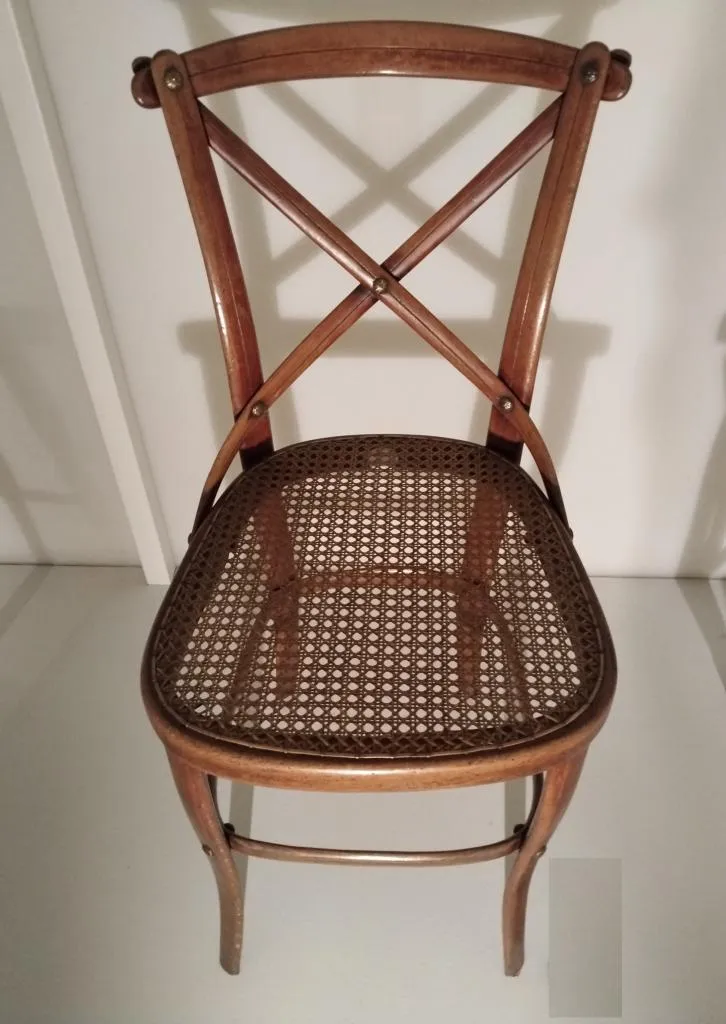
Source: by Stable MARK - own work
Crafted: Solid bent beech, brown stained; brass fittings; cane weave.
Thonet Chair Model No. 110
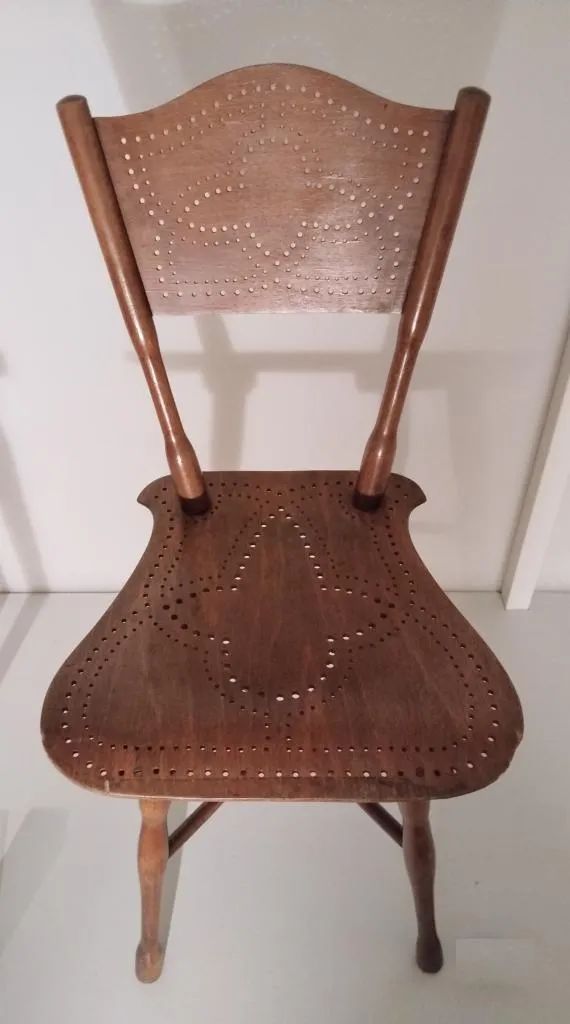
Source: by Stable MARK - own work
Crafted: Turned beech; perforated plywood, brown stained.
Share this article
